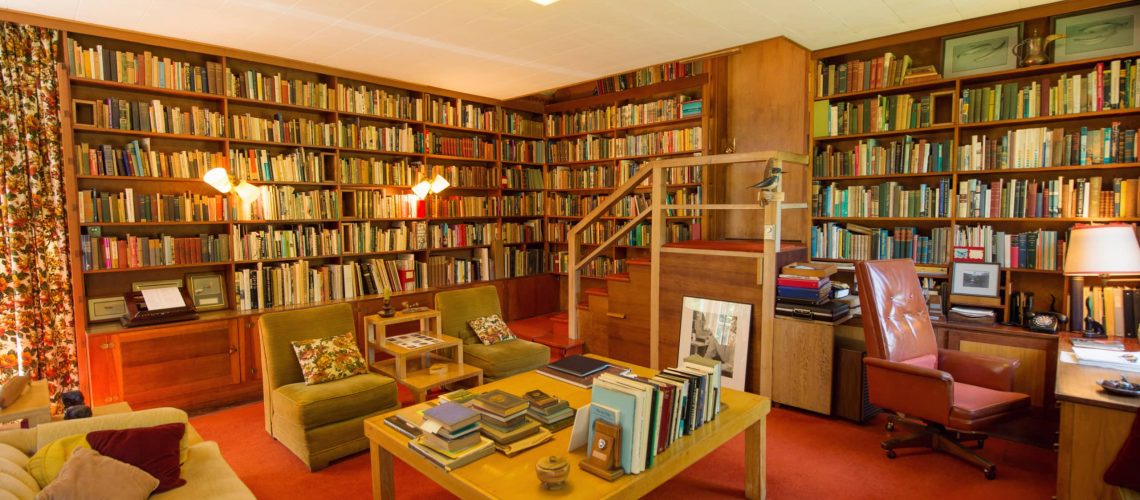This past October, the Comox Valley lost a beloved long-time resident, Father Charles Brandt. An ordained priest and member of the Hermits of St. John the Baptist, he lived on the banks of the Oyster River and devoted his life to protecting and preserving natural habitats. Among his skill set was one very specialized area of knowledge – the care and conservation of old books.
Father Charles first heard of the Haig-Brown Library in 1965. This is the same year he arrived on Vancouver Island, and he had not yet made it as far as Campbell River. In July 1984 the Museum invited him to write a guest column for their newsletter, Musings, to share a little about his experience working with the Haig-Browns and their books, and some of his wisdom on book conservation that he passed on to the Haig-Browns and the future caretakers of their books.
“During that one day I met three members of the Haig-Brown family, quite by accident, excepting for Rod: Rod at the RCMP office, Ann at the High School Library, and Valerie at one of the prominent law offices. I was seeking out institutions that might house books, and discovered the people who cared for them. It was clear who had the monopoly in Campbell River.”
Over the years he did numerous commissions for the Haig-Browns, and came to appreciate what he called “their marvelous library”. In 1981 his friend Van Egan suggested he take a more professional interest in the library that was to be preserved as part of the Haig-Brown Heritage House. “He encouraged me to proceed with the study of the library from a conservation point of view. In the following year I did an in depth survey of the library.” When he returned and met with Ann in the fall of 1983 he found that every one of his recommendations had been followed. “The library sparkled. I couldn’t but think that the books of the library might now last a few hundred years longer because the marvelous team of people had taken some time and applied a few conservation principles not only in theory, but in practice.”
The following are a few of the guidelines recommended by book and paper conservator Charles Brandt. Some of these have been updated since, such as the use of lavender sachets instead of moth balls.
The primary destructive forces on books are: moisture, acidity in the paper, light, heat, dust, storage materials, shelving material, insects, rodents, and people.
- The best temperature for books, which at the same time provide health and comfort for people, is 70 degrees F, plus or minus 3 degrees, with a relative humidity of 47-53%. Humidity above 65% encourages mold growth, and humidity below 47% warps wood and makes paper brittle.
- Do not let bright light fall on books.
- Damaging gases such as sulphur dioxide, nitrogen dioxide, ozone and hydrogen sulphide, enter libraries via dust particles. Harmful dust levels can be controlled if windows are kept closed. It is especially important to vacuum the top edges of books from time to time.
- Wooden shelving is acidic and will in time contaminate books. Acids can be sealed in by treating your shelving with several coatings of urethane or paint.
- A good insect deterrent is moth balls. A good deterrent to rodents is a good mouser, but if you are not a cat fancier, traps will do.
- Since there is no real deterrent for people, remember to always support the book spine with one hand, avoid dog-earing pages, use dust covers, and wash your hands before handling books.
The Haig-Brown library is still very much in use today, and is currently hosting writing retreats with some emerging Campbell River writers.
This article is written by Erika Anderson and first appeared in the Campbell River Mirror in January 2021.


